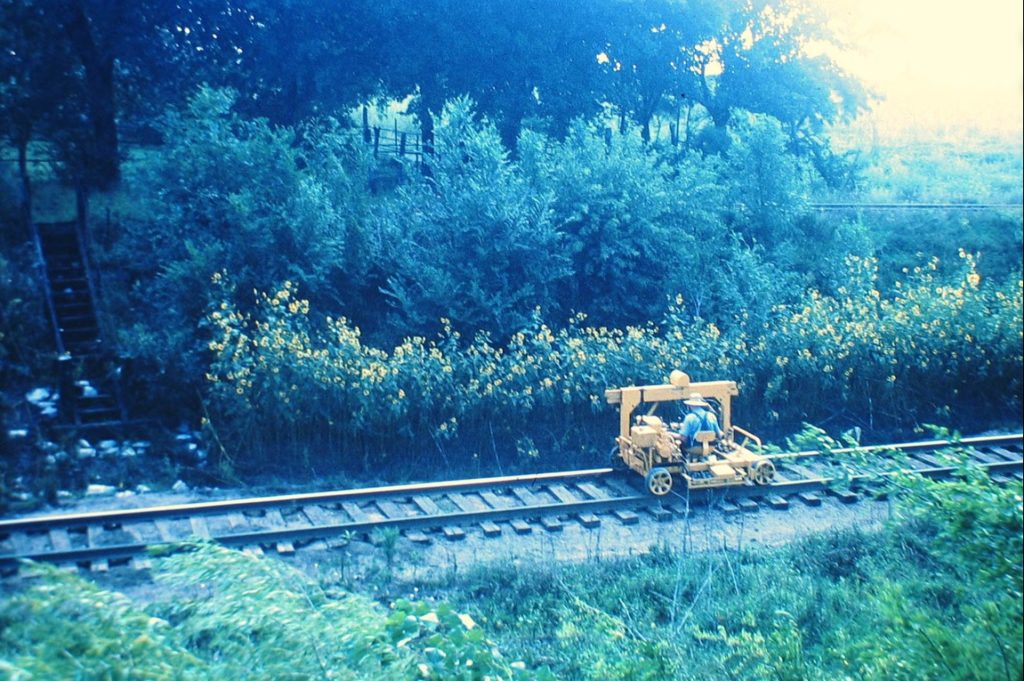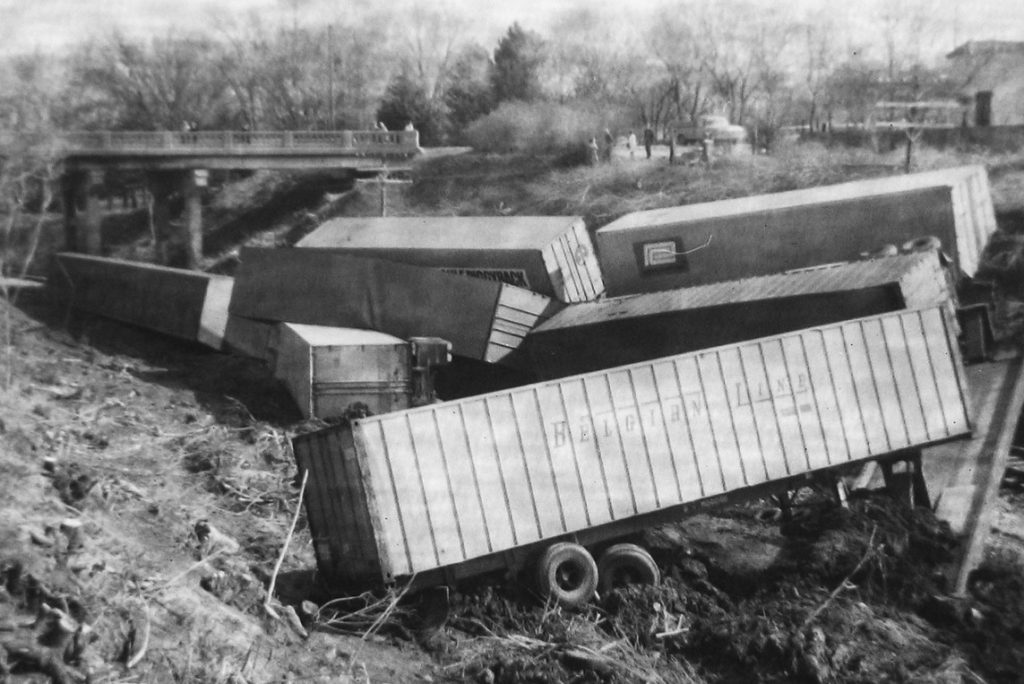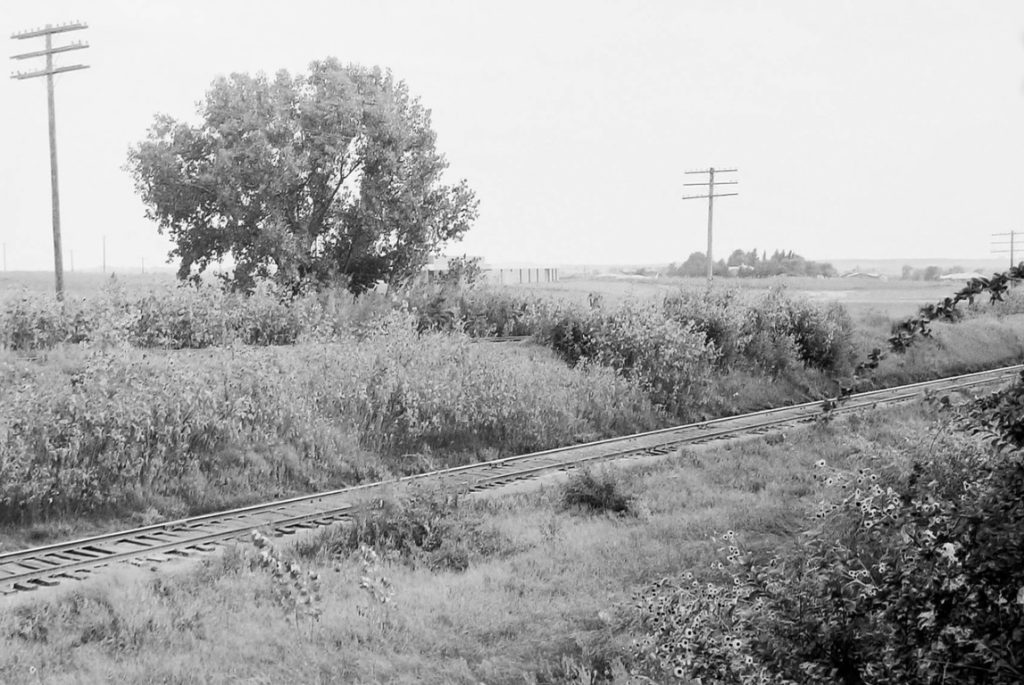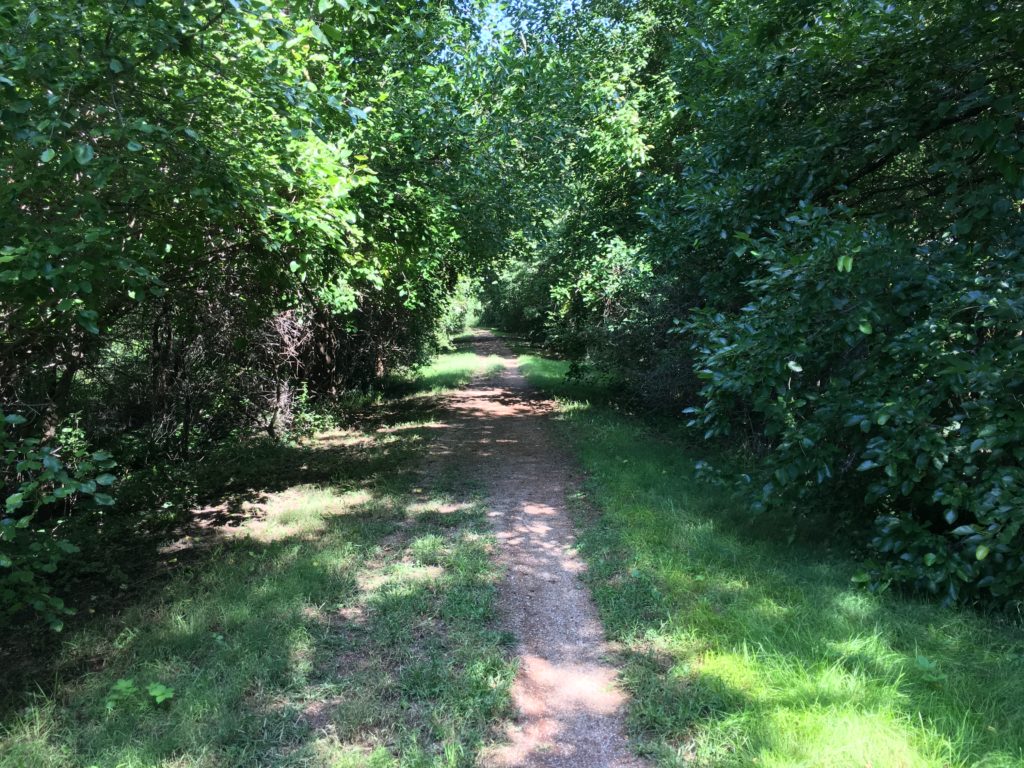Last week I focused on where the Rock Island Trail may eventually go after the completion of the trail and refurbished bridge over Salt Creek in Wilderness Park- the bridge formerly known as Danger. Now I’m going to re-visit a post from the archives that covers the trail going the other direction, from the new GPTN connector bridge going to the east then north. For that post I had talked to my cousin who grew up next to the Rock Island when it was a functioning railroad. His account starts from the Penny Bridges then heads south. The Penny Bridges takes it’s name from the fact that it would cost you another penny to ride the street car past them. The railway corridor then wasn’t the park-like setting along the trail we see today. It ran by small farms along the edge of the city.

First, he remembers the thousands of frogs heard all summer. There was often standing water near the bridges, as discharge pipes from nearby buildings and parking lots emptied into the lower railway corridor. The tracks were strewn with glass and trash and kids would lay pennies on the rails to flatten them. Southeast of the bridges was an apple orchard, and continuing south, a popcorn field. Before Calvert, which was gravel and not a through street, was a railroad siding, it’s switch, and a fuel tank. Lumber for the wood shop at Union College was unloaded and trucked from there. Hobos (an abbreviation for homeward bound) sometimes rode the rails, and local kids would sometimes hitch rides too, unbeknownst to the conductor. In the early seventies, he thinks, was the derailment, which left new cars and household appliances strewn across backyards.

In the area across the trail from Leon’s Market, kids in those days would dip water into cardboard milk cartons and pour it into the holes of the Franklin Ground Squirrels, who are similar to gophers, and the 13 stripe ground squirrels, who would stand up and whistle in alarm. Once flushed from their burrows, my cousins would capture one when they wanted a pet, take it home and tame it. The area south of the Penny Bridges to the west, past the wooded area, was known to have a good population of Bull snakes, and a little further down was another apple orchard. Wild asparagus was available along the tracks. South, in Bishop Heights, was the Catholic orphanage, school, and dump, which always seemed to have a fire burning. Continuing on across Highway 2, the first bridge was enclosed as it is today, but the second was not. A brave, or foolhardy, child could walk across, hoping a train was not coming. You could look down through the railroad ties to the 27thSt. roadway far below.

You’ve probably ridden on the trail north from the Penny Bridges on through Antelope Park, through the tunnel under 27th and Capitol Parkway on through the Antelope Valley project. The old Rock Island Depot is between O and P streets on 20th. We can ride up out of the valley east where it forms the beginning of the John Dietrich Trail over the Holdrege St. bridge, south of the Devaney Center. The Rock Island railway paralleled the south side of the Burlington Northern line past State Fair Park, now Innovation Campus, turning east at about Seward and 48th St. The Dietrich Trail wends it’s way through a series of parks, some created from land originally intended for a proposed Northeast Radial roadway, and along streets. At 48th St. the Dietrich becomes the Murdock trail. Strong Town’s Lincoln group led a bike tour of the Northeast Radial route last spring and I think they are planning on doing it again.
If you’d like to see what the Rock Island line looked like from a train in 1977 from Havelock to the south edge of Lincoln, here’s a video. The short video’s quality is poor, and you’ll probably want to slow it down to 1/2 or 1/4 speed, and turn the audio way down, but it’s worth it. I have theories about where the end of the line and the direction reversal is, but I’m not sure.

The trail continues on to 112th, but the railway continued on through Prairie Home, Alvo, Murdock, and to South Bend where it crossed the Platte. The Rock Island paralleled the Missouri Pacific, or Mopac. It would have been a great rails-to-trails project. The the route for the 8 mile gap in the Mopac between Wabash and South Bend has been decided and mostly funded,.
In the 1910’s my grandparents would take a horse and buggy from near Alvo, where the Rock Island line passed practically through their back yard, and ride to the Havelock Depot, where they would pick up a street car bound for Epworth Park. It’s part of Wilderness Park now, but then it was a summer camp known for it’s Chautauquas and other popular events.
